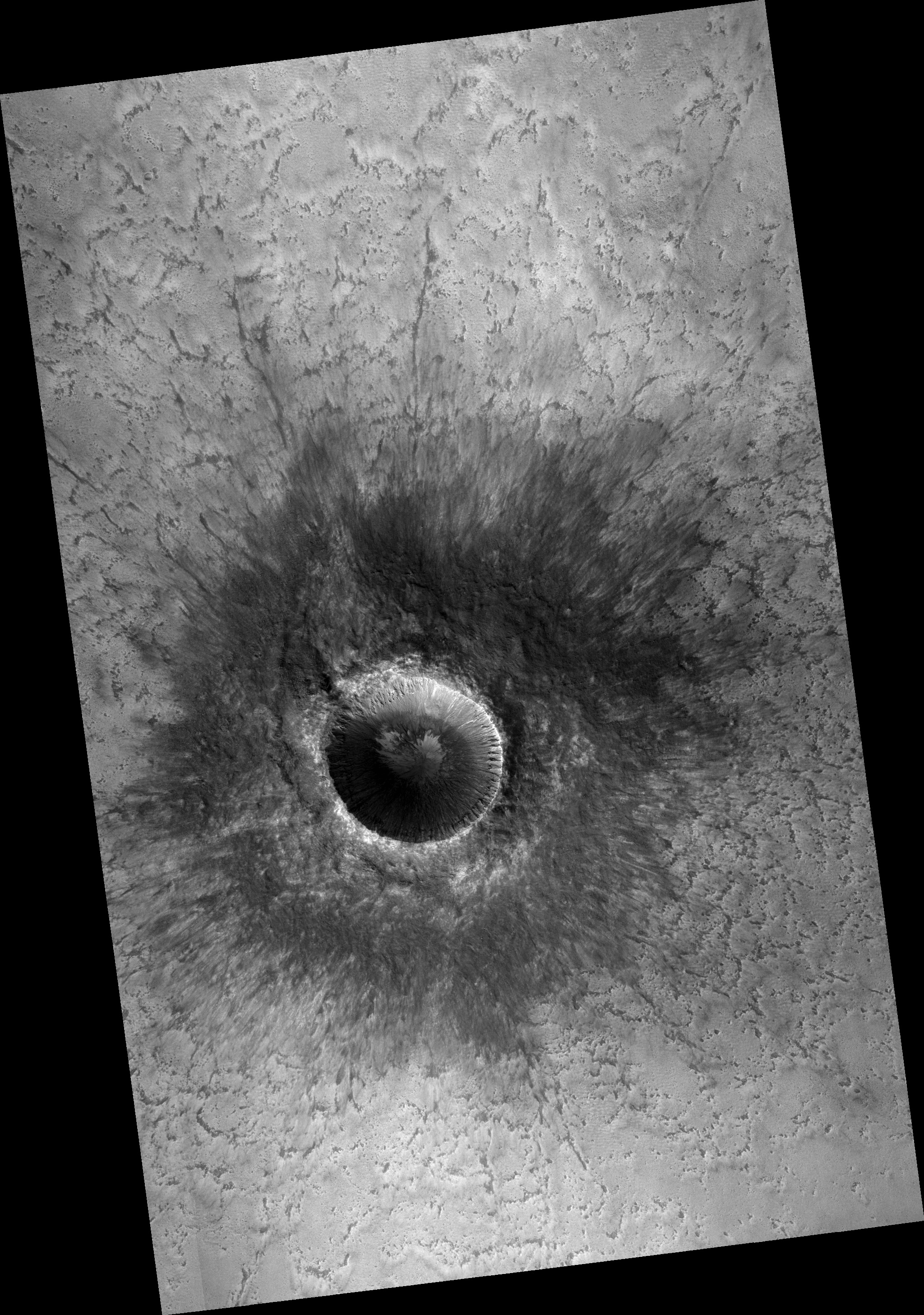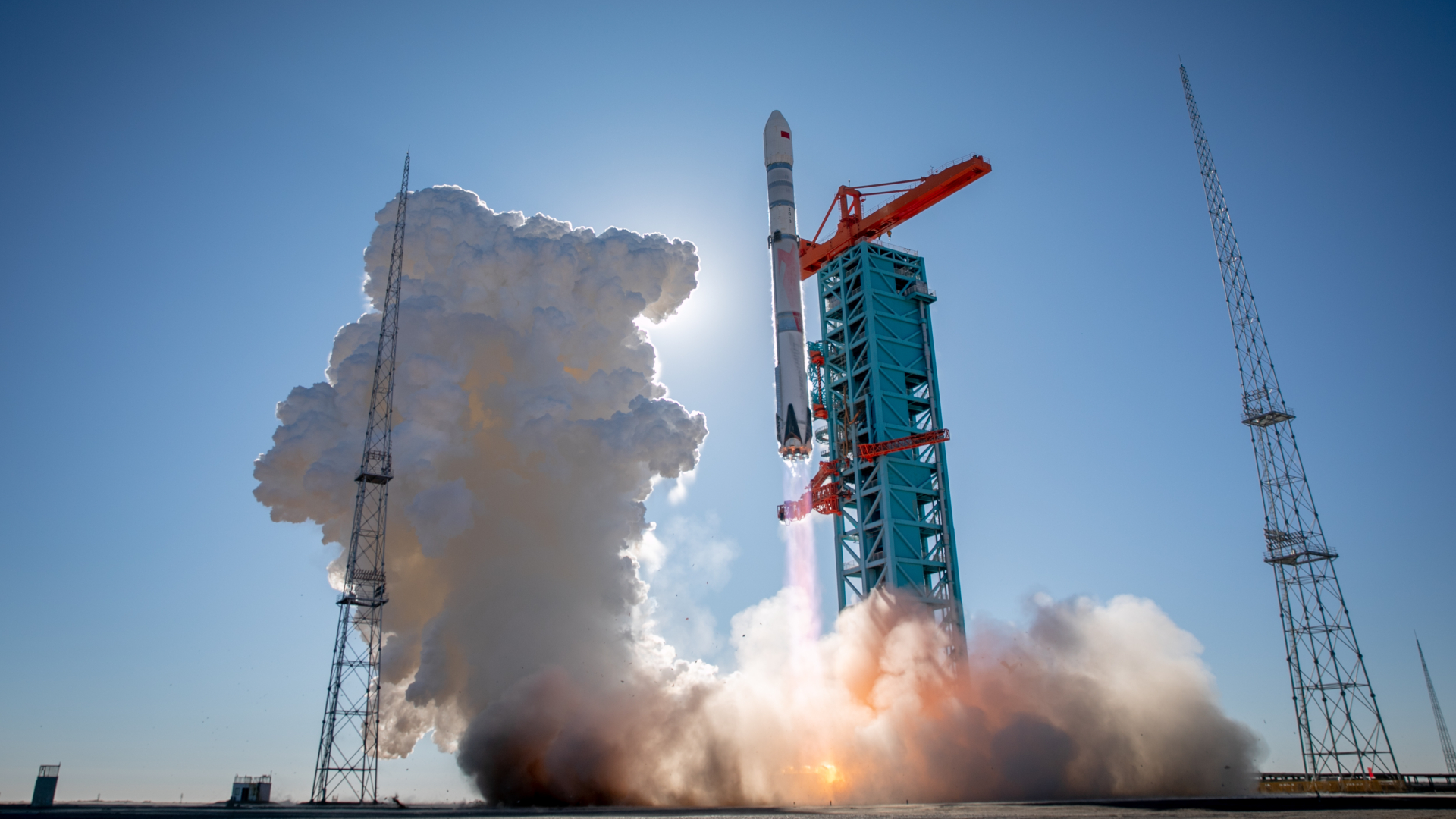Gullies Streak Down Mars Crater in Stunning NASA Photo

Gullies streak down the slopes of a frosty Red Planet crater in a gorgeous new photo by NASA's Mars Reconnaissance Orbiter (MRO).
MRO captured the image using its High Resolution Imaging Science Experiment (HiRISE) camera, which can spot features as small as a coffee table on the Martian surface.
"This is the location with the most impressive known gully activity in the Northern hemisphere," HiRISE principal investigator Alfred McEwen, a professor of planetary geology at the University of Arizona, wrote in an image description yesterday (April 18). The location he was referring to is about 51.7 degrees north latitude and 333 degrees east longitude, according to the description. [See more great Mars photos by MRO]
"Gullies are active in the winter due to carbon dioxide frost, but northern winters are shorter and warmer than southern winters, so there is less frost and less gully activity," McEwen added.
Therefore, the crater's gullies are quite different from the dark streaks known as recurring slope lineae (RSL) that temporarily stain some slopes near the Martian equator during the warmest parts of the year. Some scientists posit that RSL are signs of salty liquid water, but others point to dry landslides as the likely cause.
Though NASA released the gully-crater image yesterday, HiRISE actually took it on Jan. 15.
The $720 million MRO mission has been circling Mars for more than 11 years, studying the planet's geology and climate, searching for signs of liquid water activity, and scouting out possible landing locations for future robotic and crewed missions, among other tasks. MRO also serves as a communications relay link between robots on the Martian surface, such as NASA's Opportunity and Curiosity rovers, and their handlers back on Earth.
Breaking space news, the latest updates on rocket launches, skywatching events and more!
MRO and its instruments remain in good shape despite the spacecraft's relatively advanced age, NASA officials have said.
Follow Mike Wall on Twitter @michaeldwall and Google+. Follow us @Spacedotcom, Facebook or Google+. Originally published on Space.com.

Michael Wall is a Senior Space Writer with Space.com and joined the team in 2010. He primarily covers exoplanets, spaceflight and military space, but has been known to dabble in the space art beat. His book about the search for alien life, "Out There," was published on Nov. 13, 2018. Before becoming a science writer, Michael worked as a herpetologist and wildlife biologist. He has a Ph.D. in evolutionary biology from the University of Sydney, Australia, a bachelor's degree from the University of Arizona, and a graduate certificate in science writing from the University of California, Santa Cruz. To find out what his latest project is, you can follow Michael on Twitter.

